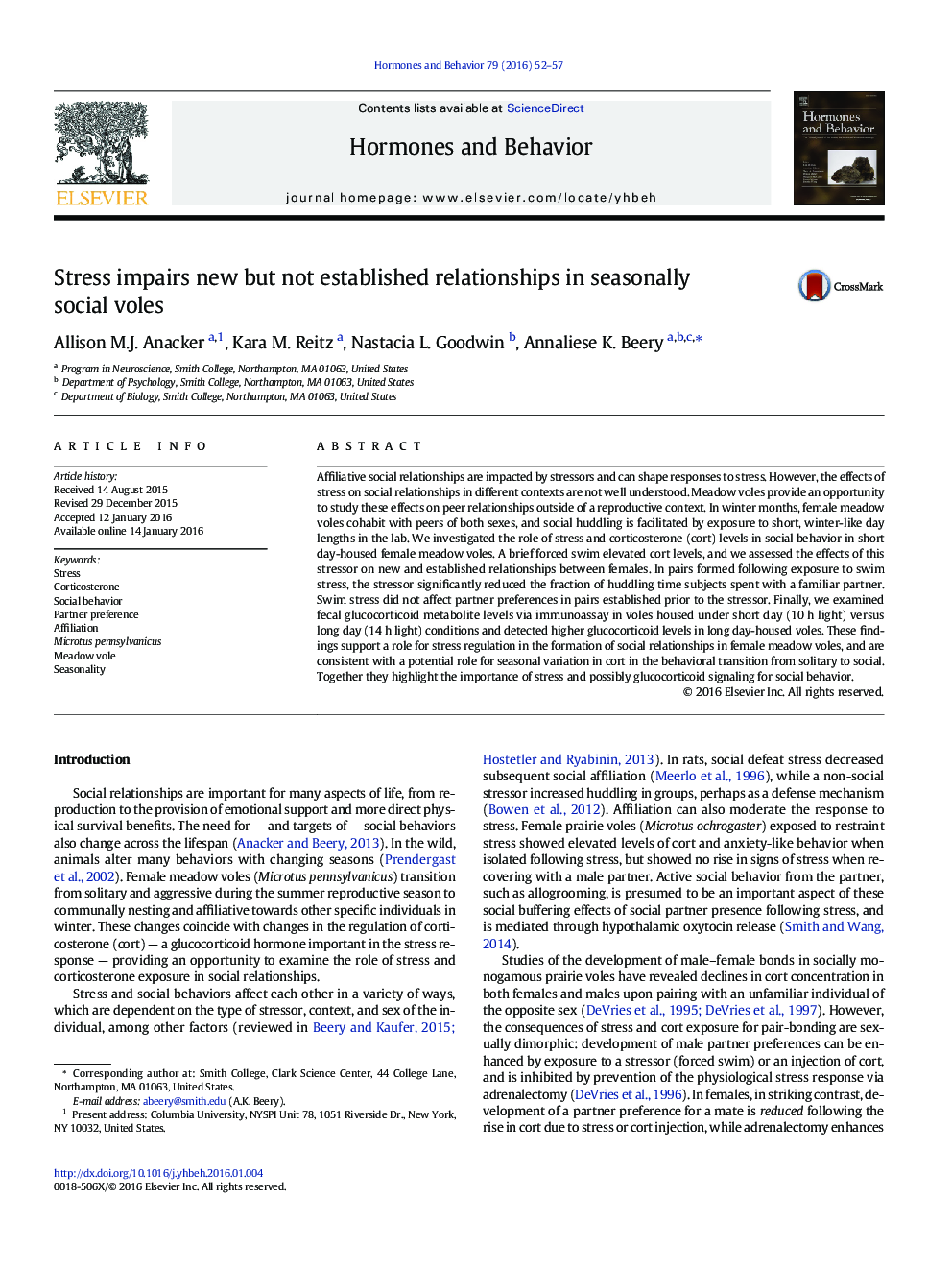| کد مقاله | کد نشریه | سال انتشار | مقاله انگلیسی | نسخه تمام متن |
|---|---|---|---|---|
| 323046 | 540475 | 2016 | 6 صفحه PDF | دانلود رایگان |
• Female meadow voles prefer known social partners in short day lengths.
• Swim stress raises corticosterone, and impairs preferences for new social partners.
• Swim stress does not affect preferences for established social partners.
• Fecal cort metabolite levels are higher in long days than in short days.
• Stress may influence seasonal social behavior.
Affiliative social relationships are impacted by stressors and can shape responses to stress. However, the effects of stress on social relationships in different contexts are not well understood. Meadow voles provide an opportunity to study these effects on peer relationships outside of a reproductive context. In winter months, female meadow voles cohabit with peers of both sexes, and social huddling is facilitated by exposure to short, winter-like day lengths in the lab. We investigated the role of stress and corticosterone (cort) levels in social behavior in short day-housed female meadow voles. A brief forced swim elevated cort levels, and we assessed the effects of this stressor on new and established relationships between females. In pairs formed following exposure to swim stress, the stressor significantly reduced the fraction of huddling time subjects spent with a familiar partner. Swim stress did not affect partner preferences in pairs established prior to the stressor. Finally, we examined fecal glucocorticoid metabolite levels via immunoassay in voles housed under short day (10 h light) versus long day (14 h light) conditions and detected higher glucocorticoid levels in long day-housed voles. These findings support a role for stress regulation in the formation of social relationships in female meadow voles, and are consistent with a potential role for seasonal variation in cort in the behavioral transition from solitary to social. Together they highlight the importance of stress and possibly glucocorticoid signaling for social behavior.
Journal: Hormones and Behavior - Volume 79, March 2016, Pages 52–57
